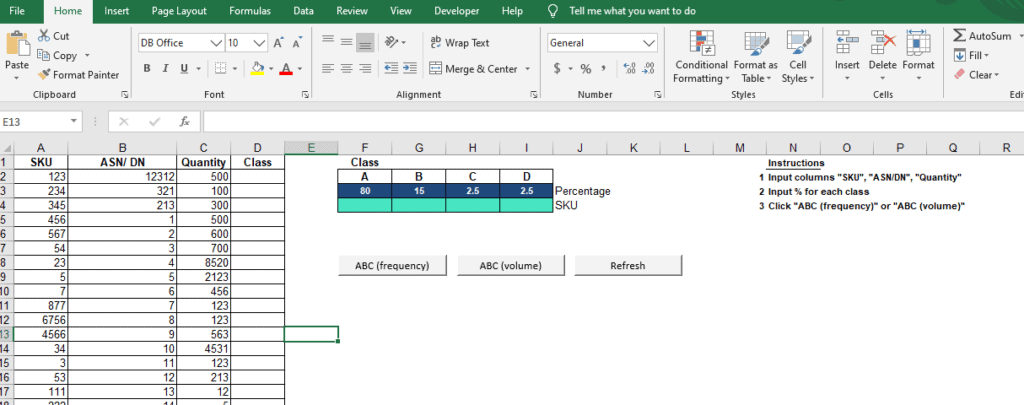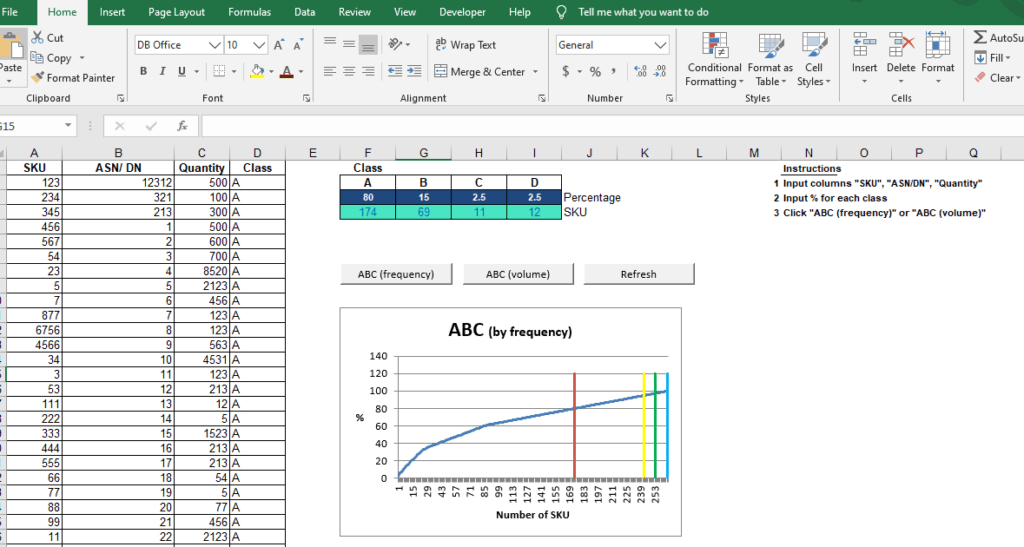Warehouse Slotting
What is warehouse slotting?
Warehouse slotting refers to the placement of inventory in the storage environment. This can be the putaway for pallets, cartons or even loose pieces into various storage medium (example, pallet racking, shelving, flow racks etc). It is the optimized way of organizing the SKU (stock keeping units) in the warehouse in the best possible locations. This is part of warehouse inventory management.
Type of slotting
There are mainly 2 types of slotting, namely fixed slotting and random slotting.
Fixed slotting (static slotting) refers to the practice of putting product types into pre-assigned dedicated locations. These locations are already “pre-booked” by these SKU. Even if these locations are empty, they will not be available for other SKU.
Random slotting (dynamic slotting) means the practice of putting the product type into any locations in the warehouse. This is be either determined by the putaway warehouse staffs or suggested by the system. With this practice, there is a possibility of a product of the same SKU being stored in different part of the warehouse.
Objective of warehouse slotting
The objective of warehouse slotting is to organize the storage of items properly. The picking activity done during the outbound stage will be efficient. There will be a reduction in time wastage as well and orders are fulfilled quickly.
Why is slotting important?
Improve inventory visibility
Pickers can visually recognize the goods and picking activity can be done more efficiently, by placing inventory in the right locations (based on inventory profile such as size and weight).
Reduce damages/losses/expired goods
Goods are placed in systematic and organized way. This translates to a reduction in losses and possibly damaged or even expired goods which are forgotten. As they always mention, out of sight out of mind. Operations staffs will take note of items that are not frequently moved since the inventory are visible.
Optimize storage locations/ space utilization
With a good slotting strategy in place within the software (Warehouse Management System normally has algorithms or rules already assigned), the storage space will be optimized correctly. Typical warehouse storage has 80% utilization.
Reduce congestion and bottleneck
At times, operation staffs will place high runners (fast moving items) near to one another for convenience. Imagine placing these inventories all in a single aisle. When orders are dropped, multiple pickers with their MHE will be converging into this single aisle to fulfill the orders. Congestion happens. Thus, there is a need to spread out the high runners to different aisles, and slotting correctly in the warehouse is important.
Improve picking accuracy and speed, increase productivity
With a good slotting strategy in place, the inventories are already placed in ideal locations. Upon order drops, pickers will move around within the warehouse to complete the orders. Since the picking process is smooth, the speed will naturally increase and so will the productivity.
Reduce resources required for picking
With an increased in productivity, the number of manpower and MHE required will be reduced. As an example, the daily order is 160.
If a picker takes 15 minutes to complete an order, he will complete 4 orders in an hour. Assuming 8 working hours, the picker will complete 32 orders in a day.
To complete 160 orders, there will be a need of 5 pickers.
Now, assuming with the good slotting strategy in place, the picker takes 12 minutes to complete an order. He can fulfil 5 orders in an hour. Again, for a working day of 8 hours, the picker can complete 40 orders in one day.
To complete 160 orders, there is now a requirement of 4 pickers instead.
Therefore, a saving of one headcount.
Reduce wastage (travel time to product and search time)
A good warehouse slotting algorithm will place fast moving items in easily accessible area for picking. Pickers will travel a shorter time to pick these items and a shorter time to search and find the required inventory.
Direct Benefits of warehouse slotting
Based on Logistics Bureau, there is a potential cost savings of 10% to 20%.
MWPVL mentioned there is generally a 5 to 20% increase in labor productivity for order picking.
What are the symptoms that slotting is required?
There are warehouses which claim that operations are working fine with no requirement of slotting. However, there are symptoms that show otherwise.
- Pickers take long time to complete picking. These could be due to various reasons such as long travel time to locations, long searching time.
- Frequently incomplete picking of order fulfillment due to missing items.
- Certain area within the warehouses are frequently congested with multiple MHE, waiting for their turns to continue picking.
- Operations require more staffs compared to the planned headcount to fulfill the orders.
How to do warehouse slotting?
Preparation
To perform warehouse slotting, there are certain information you need to prepare.
- Inventory profile
- SKU Master Data
- Outbound Order data
- Inventory Location Data
There are different warehouse slotting software available, but let’s use a simple excel as an example.
Logic
Essentially, we need to differentiate the velocity of the movement for the products (SKU) according to how often they are ordered and picked. According to the Pareto Analysis, 20% of the SKU typically account for 80% of the orders.
For slotting in the warehouse, we normally classify the products into “A”, “B”, “C” and “D”.
A: Fast moving items (high runners) which are ordered frequently. They account for 20%.
B: Bulk of the items which are ordered, but not as frequently as class A. They account for about 60%.
C: Slow moving items which are seldom ordered. They represent 15% of the total stock.
D: Dead stock which are non-moving. They represent the remaining 5%.
Execution
To classify the SKU, we can do it manually via excel or input the information via the warehouse slotting excel template we have come up with.

Based on the outbound order data, we note down all the SKU being ordered in column A. Subsequently, we input the order number/Delivery note number into column B. This is to distinguish the number of times a SKU is being ordered. Column C shows the actual quantity of the product being ordered.
Once columns A, B and C are filled, the next step is to adjust the percentage of classification in cells F3 : I3. The default percentages are 80% for class A, 15% for class B, 2.5% for class C and remaining 2.5% for class D. As an example, this means 80% of the activities belongs to class A and 15% of the activities belongs to class B.

If we click on “ABC (frequency)”, the numbers populated will show the SKU classified in terms of the how frequently the item is being ordered. If we click on “ABC (volume)”, it will classify according to the volume instead.
This is very different from some other software which classify the items according to the value of the goods.
Insights
By understanding which items are fast moving and which are dead stock, the operations staffs are then able to store them accordingly. Fast moving items needs to be stored in the most accessible area closest to the docking bays, whereas dead stock should be stored in the most inaccessible area such as the top level of the pallet rack furthest away from the docking area deep in the warehouse.
Warehouse Heatmap
To further enhanced the understanding of the operations staffs, you can create a warehouse heatmap as well. This will aid in the explanation to the staffs where the fast-moving items (depicted by red cells) and dead stocks (depicted by blue items) are.
A conventional warehouse will perform the warehouse slotting exercise every half a year or every quarter, depending on the nature of the operations and inventory profile.

Where is the warehouse slotting template available? I do not see it in free tools.
It’s available in the link below.
https://warehouseblueprint.com/shop